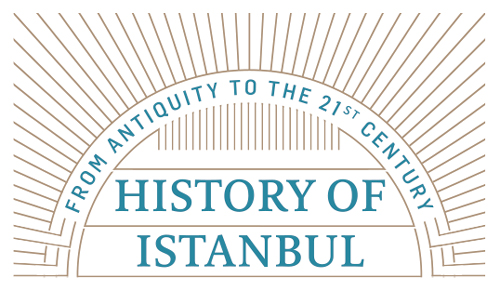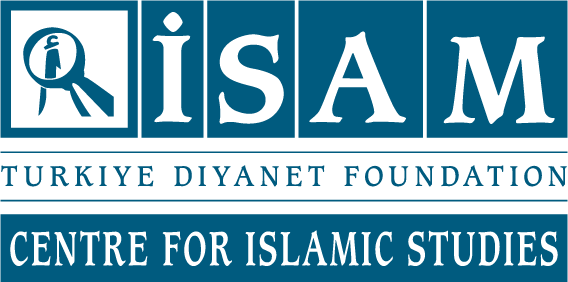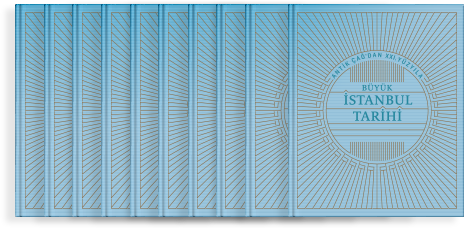Introduction to the History of the Queen of the Cities
The official name of Istanbul in Byzantine era was Constantinople meaning the city of Constantine referring to its founder Emperor Constantine or Nea Romē (New Rome) as it was similar to the city of Rome. Its name in daily use was Eis-tēn-Polin, which explained where the word Istanbul stemmed from and meant the city/in the city. Also, people of Byzantine thought that “The Queen of Cities” was a proper name for their capital. It is necessary to know the financial history of this city to understand how a small Greek colony along Bosphorus became the candidate for being the capital of the Roman Empire in a millennium and how it affected the whole world as the capital of the East Roman Empire in the following millennium.
The capital of the Late Ancient Era Roman Empire and Byzantine Empire served as the financial center as well as a political and cultural center and deserved the title of the queen of cities partly due to the welfare it had. Although the wealth and the magnitude of Constantinople is partly due to its status as the capital, in other words, having a big palace and a wealthy military and civilian bureaucratic class, the financial power of the city cannot be reduced to the presence of the state. The city had a financial life independent from the state due to its big population, production sector and status as an important venue of commercial exchange. Also, some financial policies implemented by the Roman Empire and the East Roman state that we call Byzantine as of the sixteenth century provided sustainability in the economy of Constantinople; however, the fate of the economy of the city did not stay the same while serving as the capital for 1100 years and experienced fluctuations being influenced by bigger developments in Mediterranean and Euroasia region. Due to reasons listed above, it will be useful to present the developments in the financial life of Constantinople in a chronological order and analyze the role of the state in the economy while examining these developments.
Written and archaeological materials are the basic sources to consult for the financial history of the Queen of Cities. Among written sources; letters, poems and the memories of travellers are important in terms of reflecting the daily life as well as the bureaucratic and legal texts. As Yenikapı excavations carried out within Marmaray Project unveiling one of the biggest ports the Middle Age showed, archaeological information is indispensable in order to understand the financial history of the city.
Greek and Roman Period:
From Byzantion to Byzantium (660 BC-330 AD)

With the collapse of Bronze Age cultures such as Ancient Mesopotamia, Hittite and Egypt around 1000 BC, South Balkans and Anatolia entered a period in which inscriptions and central states that collected taxes disappeared; the number of cities decreased and the trade volume shrank. However, this “dark” era lasted a few centuries. Classical Greek Culture, which was organized over city-states (police) and which developed the alphabet and commercial methods that they learned from Phoenicia, was formed in Greece as of the seventh century BC. These independent citystates started forming colonies particularly in the eastern shores of Aegean Sea, South Italy and Black Sea as a result of population growth caused by financial development and the search for raw materials. The city of Megara that was located in the West of Athens and had good commercial relations colonized Silivri (Selymbria) and Kadıköy (Khalkedon) by sending settlers to the northern shores of Marmara Sea at the beginning of the seventh century BC. According to the depictions of writers such as Greek Herodotos and Polybios, Roman writer Plinius and Eusebios from Late Ancient Era, Byzantion was set up by the leader named Byzas from Megara in 660 BC, 10 years after Kadıköy was set up. Therefore, the city was named as Byzantion, which meant the city of Byzas.1
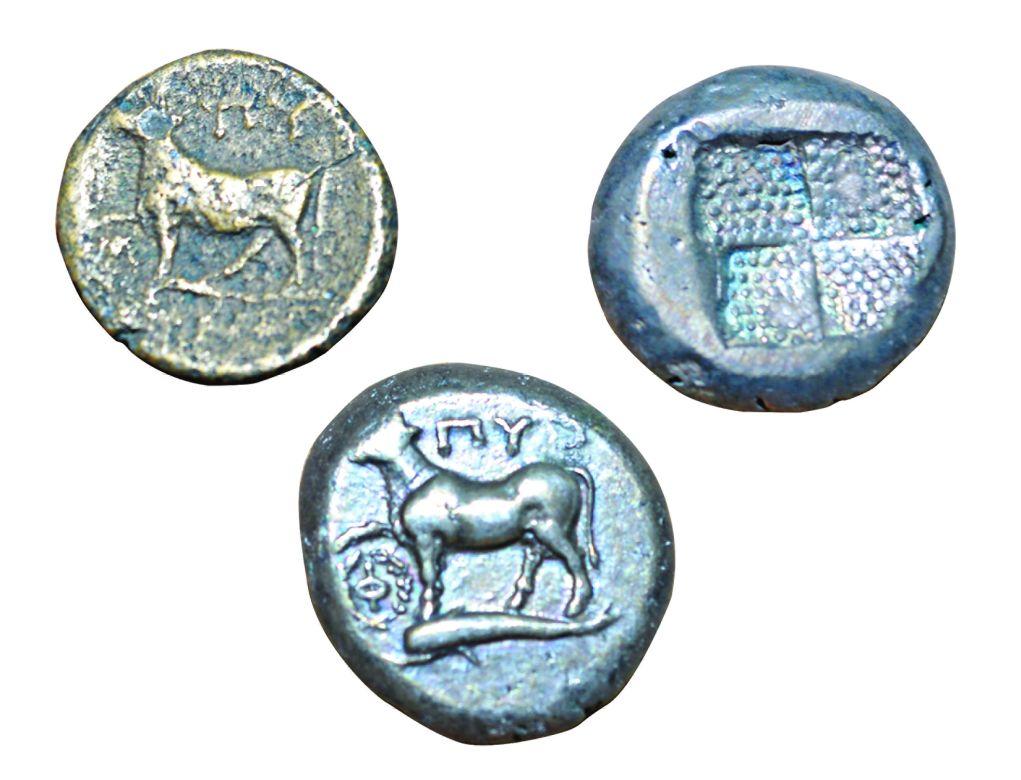
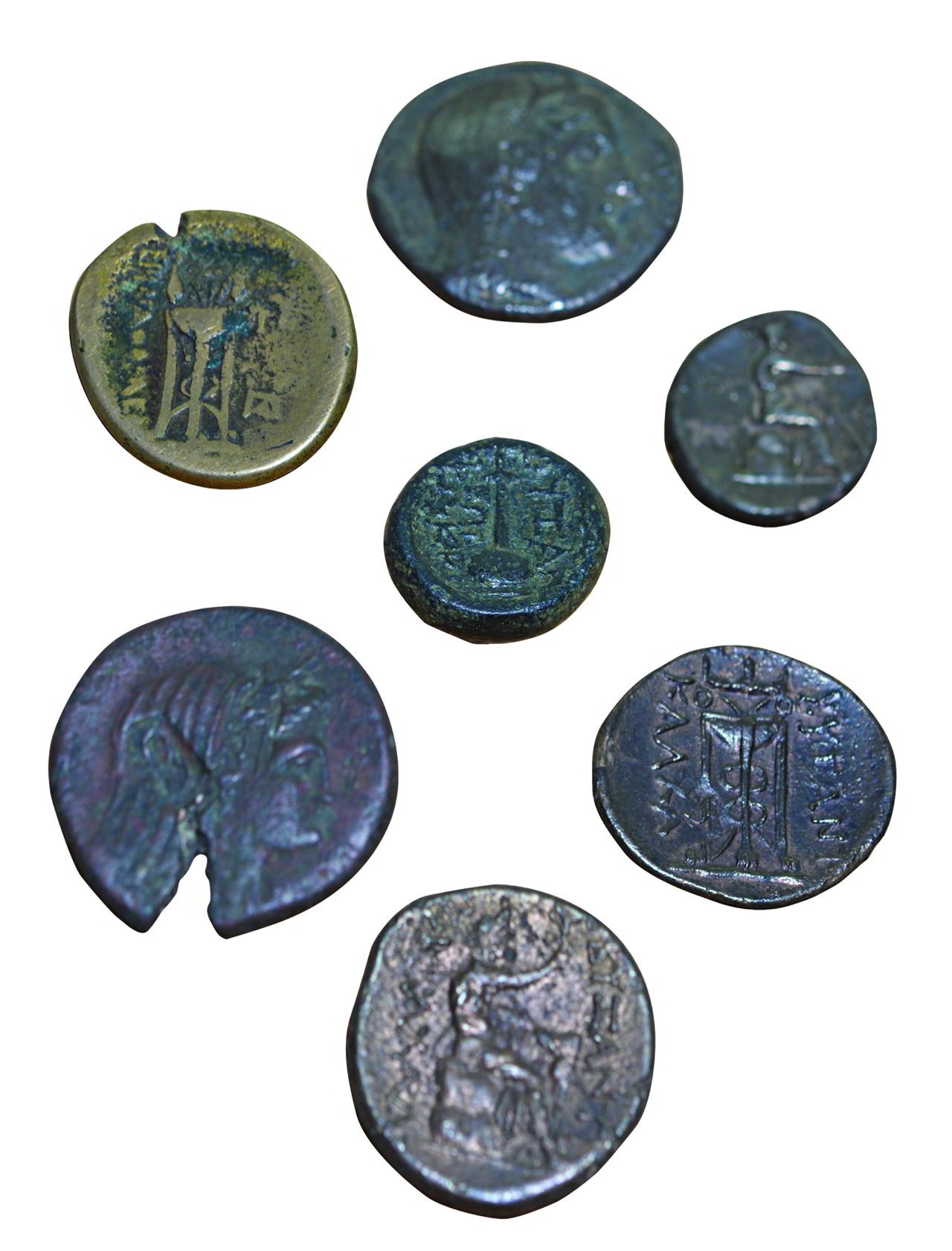
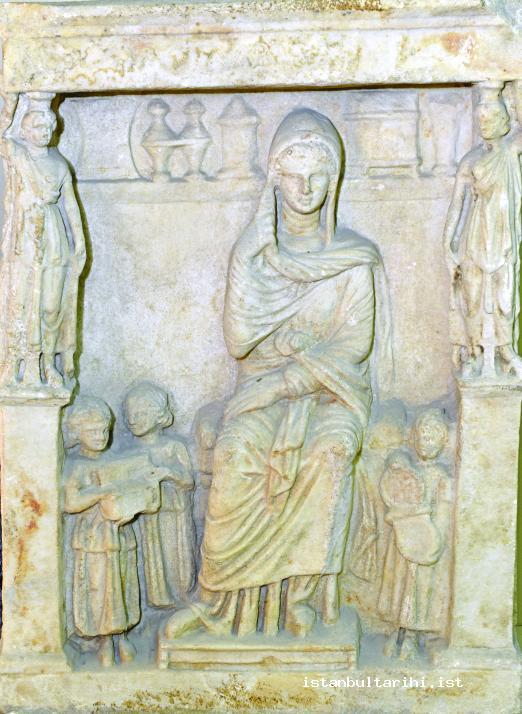
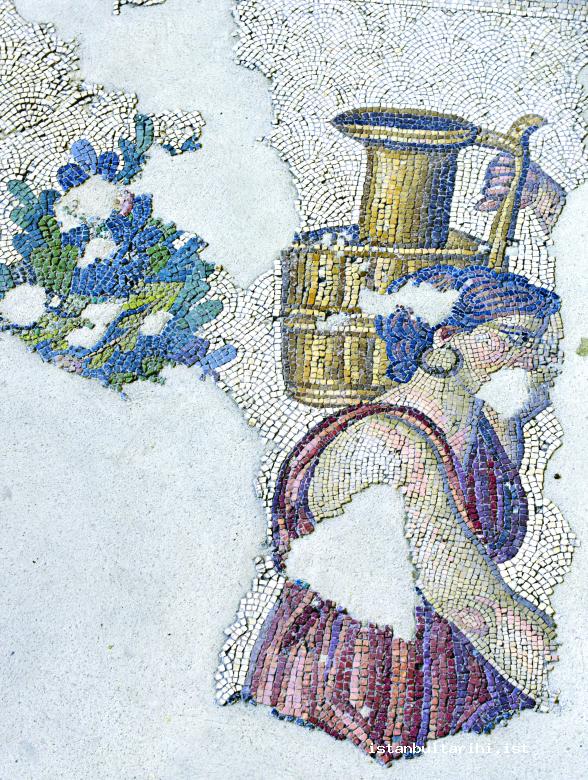
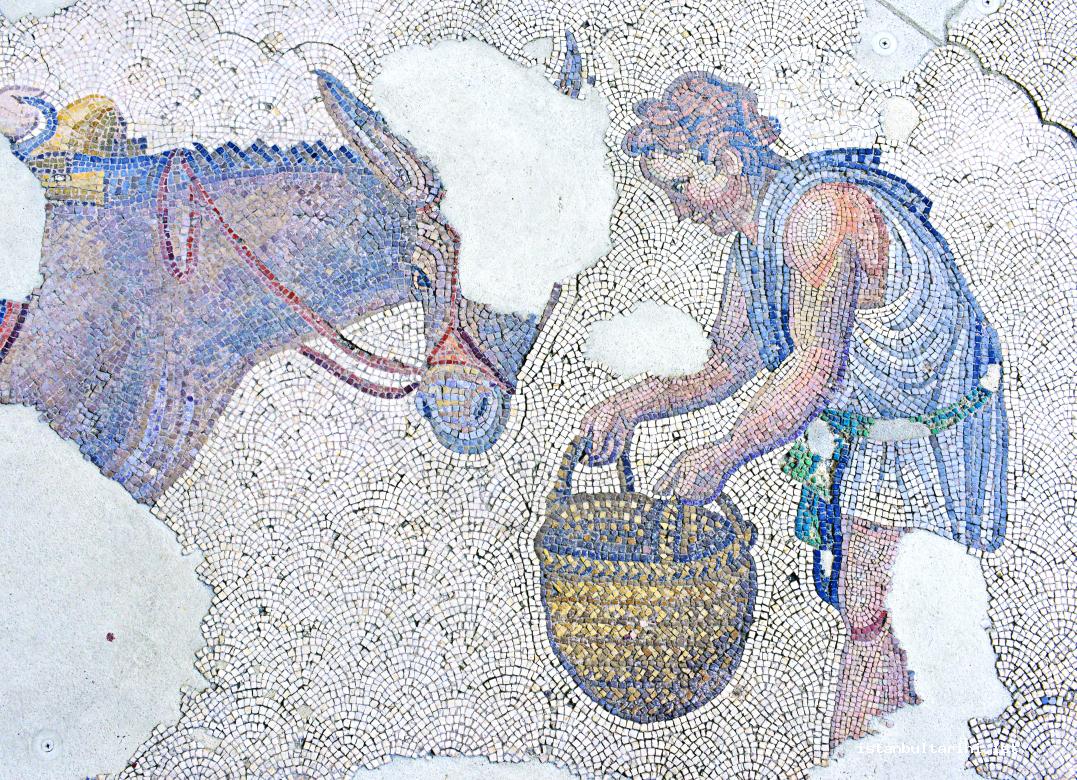
When Byzantion was established, the first settlement area was limited to the area covered by Topkapı Palace and Hagia Sophia today and there were small settlement areas in the vicinity: Sykae which means Fig Grove across from the Golden Horn which we call Galata today and Skutarion which became Uskudar in the Ottoman period but was originally Hrisopolis which meant the Golden City. There is almost no archaeological information regarding the early history of the city. The city must have developed in a short time and become an important commercial center with its acropolis where important institutions such as the treasury were located on a hill overlooking Sarayburnu and protected port located in Sirkeci-Eminönü shoreline today. Byzantion got ahead of Kadıköy in following centuries and perhaps caused this legend to be brought forward: People from Megara under the leadership of Byzas consulted to an oracle in the city of Delphi in Greece in order to get clues about where they should set up their new city. The oracle said, “Establish the city opposite from the Country of Blinds.” When colonisators, who left confused, arrived in Sarayburnu, understood that this area was a perfect spot due to its proper location to control Bosphorus and with its calm gulf we call the Golden Horn. They thought Khalkedon people who did not see this potential and settled in Kadıköy were blind.2
During the fifth century BC when the Classical Greek culture reached a peak in political, financial and cultural areas, Byzantion was passed into hands between Athens and Sparta citystates which were the two dominant political powers of Aegean Sea due to its strategic importance. In mid-fourth century BC, The city, having regained its independence in mid-fourth century BC, was also minting its own coins. The Eastern Mediterranean region witnessed a completely different political structure in the second half of the same century. As a result of the collapse of Persian Empire due to Alexander the Great’s military expeditions from Macedonia to India, a huge empire appeared that integrated the Greek world with the Near Eastern and Egyptian civilizations. Although the empire dispersed following the death of Alexander, Eastern Mediterranean and Persian worlds developed within the framework of a common culture called Hellenistic for two centuries. Although Byzantion sometimes recognized the sovereignity of some kingdoms around it such as Antigonid Kingdom and Galatia Confederation during Hellenistic period, it was at least able to keep its independence in its internal affairs.3
Agriculture and fishing were among the main income sources of the city people of nearly 20.000. The lands in Thrace part of the city were very fertile. Also, the fish had an important place in the diet of Byzantion people. Particularly bonito was so abundant that it became the symbol of the city and was displayed on the coins by the city.4 Due to its strategic location, another income source of the city as important as fishing and agriculture was trade. Byzantion was an important intersection for merchant ships that commuted between Mediterranean Sea and Black Sea and as Vincent Gabrielsen showed, it was trying to strengthen its position by providing free pass for merchants in Hellenistic Era. According to the Medieval Age resources, Byzantion started from Sirkeci-Gülhane border of today by the Golden Horn and ended in Ahırkapı by Marmara Sea in Classical and Hellenistic Eras. There were two ports in the area that is Sirkeci today by Golden Horn and there was a commercial area (agora) known as Strategion in the south of the ports. Deities Isis and Serapis of the Egypt that came to Byzantion in the third century BC are tokens of the cultural and probably financial relations the city established with the Southern Mediterranean world. The most common findings about Classical and Hellenistic periods in terms of archaeology are the grave stones found in Sultanahmet Court House, Çemberlitaş, Beyazıt, Laleli and Süleymaniye.5
During the dominance of Roman Republic over Hellenistic states in Eastern Meditarrenean in the second century BC, Byzantion acquired the status of an independent city under the protection of Rome and was under Bithynia-Pontus state of Rome, which was already an empire by 73 AD. Emperor Hadrianus had built an aqueduct, which stretched out to Thrace, in order to satisfy the water demand of the city called Byzantium in Latin under Rome dominance in the early second century BC. Despite this positive development, at the end of the second century AD, Roman Emperor Septimius Severus destroyed Byzantium due to the support it gave to his rival Pescennius Niger. The same emperor had the city rebuilt after a short while. Byzantium kept growing and its borders reached towards the west, to Çemberlitaş today. While Emperor Septimius Severus was rebuilding the city, he had a main road constructed from Blue Mosque Square to Çemberlitaş of modern day (Mese or Divanyolu).6
Late Ancient Era: The Birth of the State of Byzantine and Its Capital (Fourth-Sixth Centuries)
The peace and security environment (Pax Romana) ensured by the Roman State around Mediterranean a few centuries BC and AD began to weaken in the third century and successive crises brought an end to one of the biggest empires of the history. The emperors of the third and fourth centuries, particularly Diocletianus (b. 244-d. 311) and Constantine I (b. 272-d. 337), undertook radical reforms in order to protect the unity of Roman Empire, which was worn down due to continuous Germen and Sassanian invasions, separatist movements, the fight for the throne and a severe economic crisis that had financial problems at its base. As a result of these efforts, they not only managed to sustain the empire, particularly in the eastern part, but also raised it from its ashes. The identity of Roman Empire changed with these reforms that included military, administrative, financial, religious and even cultural areas and the state and culture that we call Byzantine was born this way according to many historians. The basic aim of these reforms that penetrated deeply in every part of social life and state operation was to strengthen the central government in order to raise the state whose sources were drained due to inflation and military spendings to its feet financially and to connect the country to the center closely.
A decision made by Constantine I in early fourth century, which his successors did not even think of reverting, to declare Byzantion the capital city constituted a turning point for the history of the subject of this book, Istanbul. More than one factor must have played role in choosing the relatively small Byzantium as the capital of Roman Empire. The city was close to the wealthy and crowded eastern cities. It had a strategic importance in terms of military due to its location in the middle of Balkans which was the target of Goth raids, and Near East and Anatolia, which were the target of Sassanian raids. It had the proper ideological ground for the new official religion of the state unlike cities such as Ephesus and Antioch, which had a glorious pagan past. While the foundations of the imperial palace were laid in the eastern side of Blue Mosque Square of today in the fourth century in Constantinople, which was aimed to be a copy of old capital Rome in order to replace it, new mansions and palaces were being built on the part of the city which looked over Marmara Sea for the elite class in the making. While a new history was being created by bringing historical pieces from all parts of the empire on the one hand, city walls were being constructed for protection and free food system was being established in order to feed the fast-growing population of the city on the other.7
The commercial life of Byzantine went through various stages and the role of the state differed in these stages depending on both the changing political and military conditions and the developments in the economy of the country and city life. In the Late Ancient Era from the fourth century to the sixth century, enemy attacks were stopped in the border areas generally and Eastern Mediterranean economy and city life did not experience a serious shock. Constantinople was ahead of metropolitan areas such as Antioch, Alexandria and Ephesus with its population of almost 400,000 and turned into a center where the wealth of not only Anatolia and Southern Balkans but also far states such as Egypt flowed.8 Notitia Urbis Constantinopolitanae written by a retired bureaucrat as a semi-official document around 425 BC presents us important evidence regarding how the commercial life was organized in Late Ancient Era.9 Free or discounted food distribution constituted the backbone of the city subsistence.10 Both the state and the private sector had a role in this giant distribution system which included food items such as bread and most probably olive oil and wine. Ports were built for transporting the goods (particularly wheat), storehouses called horrea to store the goods and bakers to distribute/sell the goods. Four of the big six storehouses for the use of the state were in the area which looked over Sirkeci-Eminönü shoreline (while they were in the fifth region according to Notitia Urbis Constantinopolitanae) and the other two were in the valley that went down to Kumkapı from Çemberlitaş and looked over Marmara Sea (while they were in the ninth region according to Notitia Urbis Constantinopolitanae.11 It was not a coincidence that these storehouses where wheat, wine and olive oil were stored were built close to the ports in the Golden Horn and Marmara Sea. Foods were kept in these main distribution centers, before they were unloaded from the ship and distributed to the city, it. In addition to big and public storehouses, there were many smaller and private storehouses. Similarly, although around 19 bakeries where free or cheap distribution was carried out and bread distribution centers called gradus spread to every part of the city apart from private bakeries, they were dense particularly in the regions mentioned above and in the southern part of Blue Mosque Neighborhood (first region according to Notitia).12
Forums that served as squares, market places called macellums and stores (ergasterion) that were located on the streets comprised of closed columned galleries called stoa had an important role in meeting the daily needs of people of Constantinople. If we leave strategion aside, the big squares of Byzantine Istanbul were located on the main street that connected the western part of the historical peninsula to the eastern side. Constantinos Forum (Çemberlitaş), Theodosios Forum (Bayezit Square) and Forum Bovis (Aksaray) located on the main street that was known as Mese and that stretched from Hagia Sophia to Aksaray (Divanyolu Street) had both commercial and ritual functions. Macellums that were smaller than forums were areas surrounded by stores in ancient times and they mainly served as the meat and fish market. According to Notitia, there were four macellums in Constantinople. Two of these were in Sirkeci-Eminönü region and the other two were in the area that corresponds to Mesihpaşa and Mimar Kemalettin neighborhoods between Çemberlitaş and Laleli today (eighth region according to Notitia).13 Stoas where stores of various sizes were lined up next to each other were located in different streets of the city. For instance 100 stores, 50 of which were on the right and 50 of which were on the left, were built in the most valuable stoa located in Mese, between Çemberlitaş and Sultanahmet. If we include the part of Mese until Aksaray, we can see that there were about 500 stores on the main street. It is generally impossible to guess the total number of stores where both industrial production and sales were carried out; however, considering that there were 1100 stores belonging to Hagia Sophia Church only, it is clear that they were in big numbers.14
It was common to have the stores that produced or sold similar products in the same area. While the book market was located in the 4 stoas in the south of Hagia Sophia, coppersmith stores were around Virgin Mary Church. This neighborhood where Virgin Mary Church was located in the west of Hagia Sophia was called Khalkoprateia, in other words, Coppersmiths’ Neighborhood due to these artisans. Some industries were established far from the city or the residential areas in the city because of reasons such as the smell and the noise, or the risk of fire. For instance, lime kilns, pottery counters and fabric dye ateliers were located outside of the city. Glass production which posed the danger of fire was moved away from the city as well.15 In short, when we look at the commercial map of Byzantine Istanbul in Late ancient Era, we see that Sirkeci-Eminönü area at the Golden Horn mouth and the area between ÇemberlitaşÇemberlitaş and Aksaray that overlooked at Theodosios ve Iulianos ports by Marmara shoreline became prominent areas.
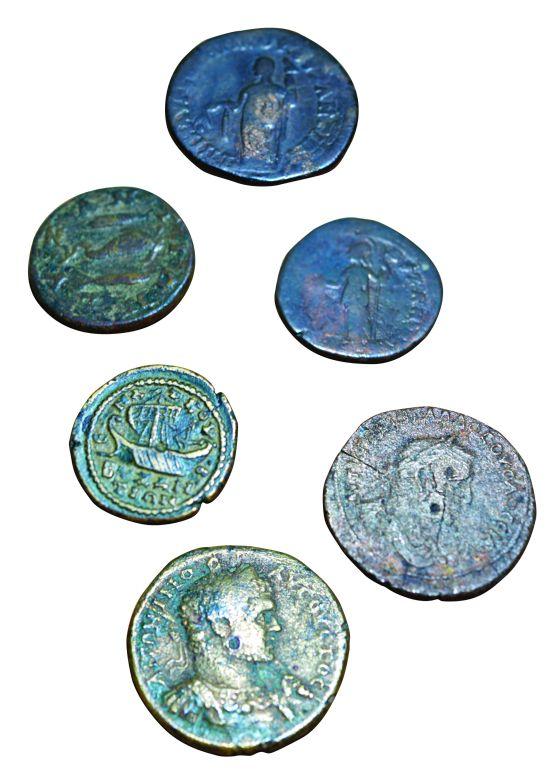
As stated in the introduction part, the presence of the state played a determinant role in the economy of the capital.16 Firstly, the state was the biggest buyer of the goods produced in Constantinople or brought to the city from outside. They revived the markets with a big and impressive palace in order to impress the public and foreigners along with a class of state officials with high salaries and a big military force that was ready to protect the city satisfied the markets commercially. For instance, when Emperor Constantinos planned a military expedition to Near East in mid-tenth century, he ordered the purchase of gift for the administrators of the places that he will visit from the markets of Constantinople.17 The road system established by Byzantine state in order to transfer armies and officers easily played a positive role in transporting the merchants and their products fast and safely.18 The presence of the common money in the whole empire played a significant role in increasing trade and connecting the far states to the capital since it prevented the expenses caused by converting one currency to the other. The monetary system of Byzantine in Late Ancient Era was based on golden coin called solidus (plural: soliduses) in Latin and bronze coins called follis. While solidus was used to collect taxes, pay salaries and make big purchases, folis was ideal for smaller scale and daily expenses. There were many mints operating under the control of the state particularly in big cities of Near Mediterranean and cities around in this early period. Byzantine money was used commonly not only in the imperial borders but also in the far lands of Europe and India as a means of exchange or savings.19 Regulations regarding weight and measurement units also facilitated shopping in the market. While bronze weighing machines were used for bigger loads and balls of steelyard in the shape of the empress or Athenaios-Minerva were used to balance the load hung on the scale with a hook, bronze scales were used for products requiring detailed weighing and square or circular certified weights were used to balance the scale.20
While some products required for the subsistence of Constantinople were provided through free market transactions, wheat was provided in the capital under the direct control of the state. Ships that operated between April and October would bring tons of wheat purchased as tax-in-kind from Egypt to Constantinople. While this process which required serious organization and continuity was previously carried out by guild of marines (navicularii) supervised by the state and supported through tax discounts, started to be implemented by independent seamen who got paid in return for the wheat they brought and acquired the right to bring other products in their ships and sell them towards the end of the same period. Similarly, merchants who brought olive oil to the capital from Cilicia, Syria and Palestine were provided with financial support.
Considering possible riots that may rise in case of a problem in the presentation and distribution of food items in a metropolis like Constantinople, it is easy to understand why emperors did not leave the subsistence of the city to the hands of the free market completely.21 An example for mechanisms outside of the market was factories belonging to the state that had an important place in the production of many products.22 Some state businesses would be set up temporarily for a project. For instance, in mid-eighth century, Emperor Constantine V had 6900 workers brought to the capital for the repair of the aqueduct and put them under a supervisor he appointed. The factories that worked for the state with artisans, who received salaries apart from the ones that worked on temporary projects such as construction of bridges, roads and buildings, manufactured weapons, fabrics and jewellery around the palace in Constantinople.23 The silk produced in these factories was sought products in both inside and outside of Byzantine and Byzantine emperors would send products made from this fabric as diplomatic gifts to the administrators of foreign states.24
It would be a big mistake to view the Byzantine economy as a controlled economy where organization and supervision were carried out by the state as opposed to some production and distribution mechanisms excluding the actors that worked and produced in free market conditions. Neither the subsistence of the city was provided entirely by the state nor were the products produced in state factories sufficient to meet the needs of the state. Moreover, most of the products in the market were the products brought by independent merchants who used local, regional and even international commercial networks within the conditions determined by supply-demand balance. The presence of certain type amphoras that generally carried olive oil or wine in various places of Mediterranean is the most important evidence for the tight connection between the states of the empire.25 Similarly, an increase rather than continuity was observed in the amount of pottery that came from around Aegean Sea, Cilicia and Syria to Constantinople.26 As of the sixth century, amber and fur that came from northern countries, gold and incense brought from the region of Red Sea, valuable stones from Middle East and ivory, spice and silk imported from China and India found eager buyers for themselves in the markets of the capital.27
Struggle for Survival (Seventh-Ninth Centuries)
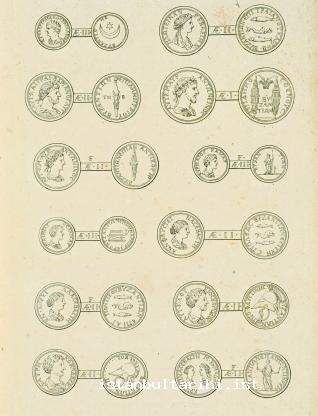
Welfare that was prevalent in Late Ancient Era went into a dramatic decline starting from the late-sixth century due to the plague and Sassanian, Arab and Slavic invasions. In the following centuries, the complex and open economy of Late Ancient Era was replaced by relatively more simple and closed economy. The population declined, cities at the center of trade and supply-demand got smaller and commerce and money circulation among the regions of the empire were minimized during the seventh and eighth centuries when the empire was struggling for survival.28 The role of the state or non-market mechanisms increased in the production and distribution of products in this period. The fact that soldiers acquired the right to use land instead of receiving a salary and small currencies such as copper coin disappeared shows that the money circulation decreased and free non-market mechanisms were more powerful. Bureaucrats called kommerkiaroi collected the kommerkion tax which was 10 percent taken from foreign trade at customs and sold the weapons and equipment provided by the state to the soldiers in the cities they were located; they even acquired the right to be engaged in commerce on their behalf (particularly silk), which shows the close relationship between the political power and commercial power. This mechanism that excluded the free market would disapperar in following centuries and kommerkiaroi would turn into officers who only collected taxes.29
The future of Constantinople, which was subject to Avar, Persian and Arab sieges, did not look very bright in this period. Glazed white pottery, which was produced in early seventh century, had a limited expansion area in the capital where the population dropped to 40.000-70.000. There were almost no construction activities in the city except repairs for defense until the end of the eighth century. Prosphorion, which was one of the four ports of Late Ancient Era, was abandoned and the soil brought by Licos (Bayrampaşa) River made Theodosios port unusable. When Neorion turned into a port for war ships as of the late seventh century, Iulianos Port by Marmara Sea was the only one left to be used for commercial purposes. Moreover, the cessation of distribution of wheat/bread, which came to the capital from Egypt as tax in early seventh century, had significant demographical and economic effects. Constantinople gradually became dependent on Thrace and northwestern Anatolia as the source of food.30 The volume and frequency for inter-regional trade decreased and the capital city received less goods. The number of mints, which had spread to many cities previously, went down to one and was located in a safe corner of the palace in the capital.31 Change was not limited to only financial structure. Enormous baths and theatres of Late Ancient Era were abandoned and charity work that used to be carried out by the municipality and prominent people in the city started to be carried out by the emperor and the church in the following centuries. In other words, civilian initiative was replaced by the state and institutional religion that worked with it.
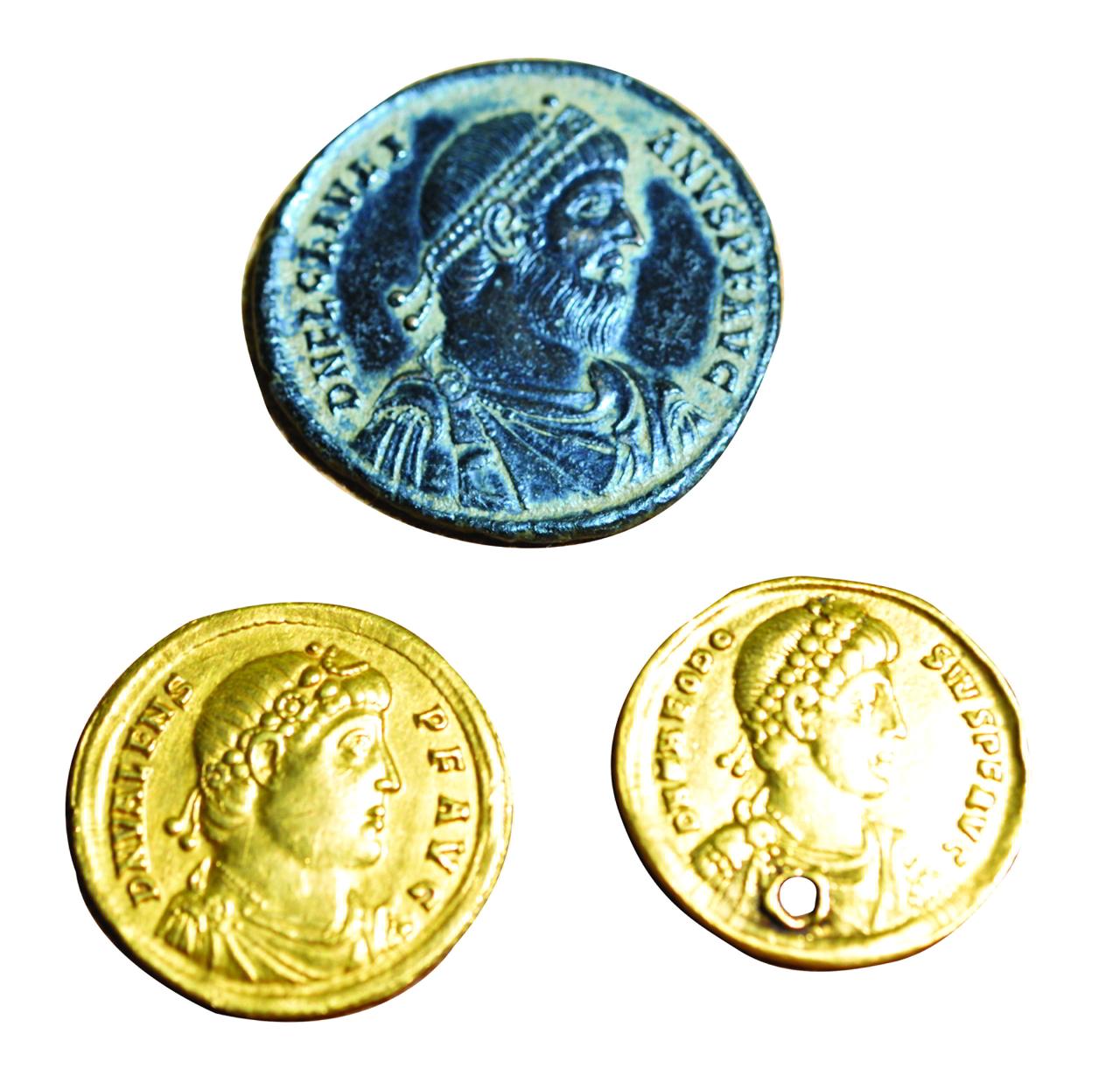
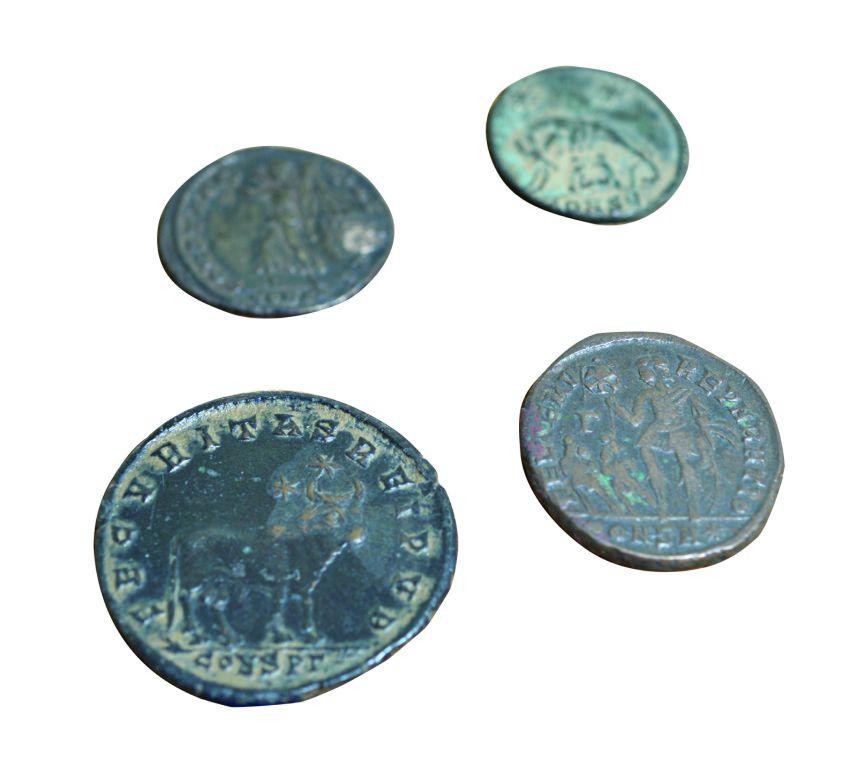
As Angeliki Laiou argued, the situation was not that desperate despite this impoverishment.32 As shown by amphora and potteries in Kherson with their origins in Constantinople, the imperial city increased its commercial relations with the northern Black Sea in the seventh and eighth centuries and glazed white potteries that were produced in the city found an expansion area although regionally.33 There are two indications showing that there were enough possibilities to make a profit in Constantinople: Merchants from far regions such as East Mediterranean and Gaul would come to the capital buying and selling goods in the seventh century. There were Byzantine merchants who were eager to receive loans whose interest was raised to 16.67 percent with the command of Emperor Nikephoros I in the early ninth century.34 The best way to understand the relationship Constantinople established with outer world and its states through maritime commerce in this period is to read the compilation called Rhodian Sea Law, which is considered to have been written in the eighth century. The law that was implemented widely regulated the relationship among captain, marines, merchants and passengers on the ship and provided important information regarding how to create financial resources for the commerce through sea and who to be responsible in case of loss of the ship or the cargo being carried. For instance, if the captain took the ship to a place where the pirates were located despite the objections from the passengers, the captain would be responsible in case the products were stolen. If the captain and the crew damaged the goods of the merchant, they were liable to pay for it but merchants were supposed to check if the ship was sturdy and new before they loaded their products because nobody would be responsible for products sunk in an old ship.35
Second Golden Era (Tenth and Twelfth Centuries)
As of the ninth century, the volume of trade increased in parallel to the security throughout land and sea routes, population growth and acceleration in urbanization under the management of Macedonian Dynasty (867-1057) also called the golden era of Byzantine Empire. As the increase in the number of fairs showed, trade within and between regions also increased and Byzantine-manufactured goods became products that were sought outside of the empire.36
Particularly the topographical and commercial history of Constantinople can be observed in a few main written sources until the beginning of the eleventh century. Patria was written by Hesykhios from Miletus and reviewed in the tenth century, and Parastaseis syntomoi khronikai was a collection of texts written between the eighth and ninth century about the history and monuments of Byzantine capital. A more detailed and realistic Constantinople description than the aforementioned texts was from the book called Eparkhos’s/Governor’s Book written in 912.37 Eparkhos, who was the second important person after the emperor in the city, played a significant role in ensuring justice and peace in the city as both the judge and the leader of police force.38 The aforementioned text prepared for the institution of eparkhos that played a serious role in regulating the industrial and commercial life of the city presents us comprehensive information about the economical life of the city, particularly the places where trade was performed and the system of craft guilds.
While the trade of the food items was carried out in an area that could be called the outer perimeter of the city, the trade of non-food items such as metal products and, perfume and luxury consumption products was carried out in an inside perimeter close to the religious and political center of the city. Although the aftermath of horreas, which were the food storehouses in previous centuries was dark, we know that at least one of them was used in Medieval Age Byzantine. The storehouse was located between Theodosios Port and Theodosios Square in Yenikapı and it was an ideal location to store the wheat that was brought via the sea. Although there was a place called Artopoleia, which meant Bakers Neighborhood, in the east of Theodosios Square, we have to admit that there were bakeries in all parts of the city. It must have been the same for olive oil, wine and grocery products. While merchants transacting ovine except for pigs brought the animals they bought around Sakarya River to Prosphorion Port in Sirkeci that was brought into service once more on ships via Izmit or Yalova and sold them in Strategion, pig merchants brought the animals to Iulianos Port in Kumkapı and sold them in Theodosios Forum (Beyazıt Square). Macellums around Strategion and Theodosios Forum were probably used as location in Late Ancient Era. People who sold fish in the city bought the fish from fishing boats that were anchored in the shore or approached the pier (skalai) and sold them in fish markets called kamara, which meant arched or vaulted structure. Although we have very limited information about the locations of these fish markets, we know that one of them was next to Neorion Port called Fish Market in Ottoman times in Eminönü.39
Hagia Sophia Church was the most expensive area of the triangle city between the Big Palace in the southern part of Sultanahmet and Constantine Forum in Çemberlitaş and luxury items were sold in the stores in this area. Valuable metals and fabrics brought from Near East were sold on the street (Divanyolu) that corresponded to the part of Mese between Çemberlitaş and Sultanahmet; ecru silk was sold in Constantinos Forum; perfume was sold in the area between the Million Stone and the entrance of the Big Palace, in other words, in the northern part of Haseki Hürrem Sultan Bath and spices were sold in the arcaded entrance called Achilleos in the same area. The information taken from the aforementioned Eparkos’s Book was confirmed in a document belonging to Patmos Monastery dating back to the mid-tenth century. According to this document regarding the sale of 5 stores, linen, silk, goatskin and Near Eastern fabrics were sold respectively in these stores in Constantine Forum.40 As stated in Saint Photeine’s life story, a glass-melting atelier (ergasterion huelopsestikon) was located on the slope going up to Hagia Sophia from Strategion, in other words, from Eminönü to Sultanahmet Square. Candle makers and coppersmith had their ateliers in this area as well. The stoas of Late Ancient Era called embolus in Medieval Byzantine resources were also located in the area from Golden Horn shoreline to Sultanahmet Square. The shopping street Makros Embolos that opened towards Beyazit from the Basilica Door in Tahtakale and cut Mese vertically was an example for these stoas. Makros Embolos means “long/big stores in a row” in Greek and it is the Uzun Çarşı Street of modern day. As French Villehardouin, who wrote the history of the fourth Crusade, stated that these stoas were burned down when Crusaders first surrounded the city in 1203. We do not have any evidence regarding the presence of these structures after that year.41
One of the main sources of the wealth of the capital city was its location on important trade routes. At the end of the first 1000 AD, Constantinople attracted many foreign merchants like a magnet as the prosperous city of a wealthy empire. Russians who set up a kingdom in Kiev and adopted Christianity from Byzantine would come to Constantinople to sell slaves, honey and beewax, and to buy manufactured products such as fabric.42 We can understand that the importance of Black Sea region increased for Byzantine between the eighth and the tenth centuries from amphoras that were located in Constantinople and Black Sea areas.43 Bulgarians who set up a state within the borders of Bulgaria today in a location dangerously close to Constantinople would similarly buy silk and leather and sell honey and linen.44 Constantinople was not only a giant mouth that consumed the incoming products greedily but also a place where the northern products were sold to Islamic world and products from Egypt were sold to the north. According to Eparkhos’s Book, some Bulgarians would buy the silk from Islamic world in Constantinople.45 As a matter of fact, the hafts made from the tooth of the seal in the Northern Sea would be brought to Constantinople from Scandinavia probably through Russia and would be sent to the markets of Cairo from there in early eleventh century.46
The merchants that came from Near East Islam world were the most valuable foreigners in Constantinople in the tenth century due to the quality of the products they presented to Byzantine and the variety of products they bought from there. For instance, al-Marwazi who was a physician in the Great Seljuk Palace in the early 12th century wrote that Muslim merchants were showed great respect in Constantinople because a big portion of the income of the city was from trade.47 As a result of trade agreements first the Abbasid Empire, then the Fatimid Caliphate in Egypt after Abbasid Empire dispersed as of the second half of the tenth century, Büveyhoğulları and Hamdanî administrators in Iraq and Syria had with Byzantine administrators, the relations were secured and merchants from these countries were given structures such as inns and mosques in Constantinople and commercial privileges.48 Fabrics made in Byzantine, particularly silk weaves, metal utensils in different shapes and types and wooden furniture items in different sizes, were abundant in Islam markets.49 On the other hand, silk products imported from Islam world were so abundant in Constantinople in the early tenth century that one of the five guilds regarding silk production and sale in the city was only comprised of people who sold silk fabrics from Near East as stated by Eparkhos’s Book. The Near Eastern silk that made an entrance from Silifke and Trabzon would arrive in the Byzantine capital via Anatolia and would be sold in the area between Sultanahmet and Çemberlitaş, which was the most luxurious neighborhood of the city. People of Constantinople did not hesitate to say that they wore the garments of the Near East. For instance, Emperor Constantine VII mentioned “striped trousers made from Egypt silk” or “undergarments in Saraken (Arab) style” in his pamphlets.50 Another product group that came to Byzantine from Islamic markets was spices, perfumes and medical products most of which came from South Asia. Spices such as black pepper that the middle class wanted to use in their food for seasoning, perfumes and incence used to spread nice smells in churches, some woods to dye fabrics and plant-based products used in preparing medicine were brought to Constantinople via Trabzon, Antakya, Antalya and Aegean Sea.51
Constantinople was a city where a wide range of products from luxury items such as silk to ordinary manufactured products were produced, there was a big consumer group from the poor to the aristocrat class with full pockets and it was full of merchants who came there to buy and sell goods from all over the world in the eleventh century.52 Also, the wealth accumulation of Byzantine merchants in the city was so high that merchants acquired the position of senatorship that they would never be able to acquire in the traditional Roman and Byzantine political tradition in this century and started having a say in the city and empire politics. In this environment, both the artisans who presented their manual labor and merchants whose lives were based on profits from buying and selling products would buy and sell products in their stores in a supply-demand spiral, which they thought would be infinite.53 The golden coin solidus which had not lost its value since the city was founded in the fourth century only lost its Latin name and took on a Greek name: nomisma (plural: nomismata). Nomisma, which had the support of a powerful economy and the state, who got more powerful, literally became the dollar of Medieval Era and considered as the current currency around whole Meditarrenean.54 Most of the stores called Ergasterion were for rent and they were small family businesses. The annual rents of these places changed between 10 and 15 nomismata. It surely required big amounts of money to buy these stores. People who worked in Ergasterion were family members and qualified workers and slaves could work there as well. While the annual income of a qualified worker was 25 nomismata, the price for an unqualified slave would not exceed 20 nomismata. As the qualifications of these slaves got better, their prices would increase as well. While a good musician slave would cost 100 solidi in the sixth century, a teacher would find buyers for 200 solidi.55
The economy of this period can be defined as an economy where the state sometimes interfered in order to restrain the practices and tendencies that would harm the social peace but where the rules of the market were mainly prevalent.56 The Byzantine commercial policyhad some basic elements when it comes to Constantinople. The state continued to be the biggest consumer, the biggest producer with its factories in the city and lands outside of the city, and the biggest regulator with its monetary system and supervision on weight/measurement units as it was in previous centuries.57 The subsistence system that was based on bringing wheat, which was taken from Egypt as a tax, to Constantinople by ships in the Late Ancient Era disappeared in the seventh century and was replaced by a system where the wheat was produced in Bithynia, Thrace and Bulgaria. Still, the nutrition of the city was not completely left to the hands of the market and the state kept the wheat market under control through necessary supervisions and regulations. While the government reduced the prices by introducing the wheat produced on state lands for cheaper prices or for free when the bread prices went up extremely, it also limited the profit margin in bread prices in order to prevent profiteering. This ratio was 16.66 percent (1/6).58 The profit restrictions in sales were not limited to bread and they were valid for all products. Byzantines developed and applied “fair profit ratio” and “fair price” concepts with the influence of Christian teaching. For instance, fishermen could make a profit of 8 percent per fish worth 1 nomisma.59 Fair price principle was to prevent prices from going over the “necessary amount” and the necessary amount was generally determined depending on the market conditions. As can be noticed, Byzantine administrators learned that the prices could not be fixed in an early era in 301 when Emperor Diocletianus’s edict that determined the upper limits of prices did not work.60
The state would audit the activities of merchants and artisans through authority it gave to the city governor called eparkhos and other officers. In order to facilitate this supervision, various professional groups in the city were divided into professional organizations called systema and were subject to supervision on different levels.61 Constantinople guilds which were basically evolved from the guilds (collegia) in Roman Empire were set up in order to both protect their members and facilitate the supervision of the state. As presented in detail in Eparkhos’s Book, there were approximately 23 guilds from the guilds of people engaged in daily and cheap products such as bakers and butchers to the guilds of merchants who sold silk and perfumes and the main aims of the restrictions imposed on guilds by the state were as following: 1. Preventing unfair competition among the members of the guild and profiteering in staple products; 2. Preventing certain merchants or a guild from creating monopoly in the whole professional branch (for instance, people engaged in silk were divided into 5 guilds: ecru silk merchants, ecru silk workers, weavers, silk fabric/garment dealers and “Syria” or Islamic Near Eastern silk importers); 3. Providing the public with quality products (it was common for candle producers to add suet in beewax); 4. Determining who can enter the guild with the guild (for instance, the ability to pay was considered in the guild of money changers); 5. Supervising Kekolymena, in other words, prohibited products were not sold to outside of the city particularly to merchants from foreign countries.62
The reason behind the last restriction was to prevent foreign states from gaining advantage over Byzantine Empire and to put the needs of the city people and the palace before everything. It was banned to sell iron and lumber to foreign countries as they would be used in weapon and ship manufacturing, to sell grains necessary to feed the society and gold and silver to be used to produce coins to outside of Byzantine borders. Byzantine administrators removed some products from the market and turned them into products provided only by the palace, in other words, prestigious products. Particularly expensive silk dyed to a certain shade of purple (royal purple) would be allocated for only the emperor and his family and would be sent to other palaces as a diplomatic present.63 The Archbishop Liutprand of the city of Cremona in Italy bought silk on his way back from an unsuccessful diplomatic visit to Contantinople as the messenger of Holy Roman German State Emperor Otto I in 968. When the Byzantine customs officers seized these fabrics as they were prohibited, Liutprand protested the situation stating that Byzantine fabrics were abundant in Italy. This story shows the state took the job of supervising goods exported from the city seriously but at the same time it was not very successful.
Conditions and durations of shopping for merchants from outside of the city were upon strict rules due to the special location of Constantinople. Ships coming from Black Sea and Meditarrenean were firstly subject to supervision in Abydos and Hieron. Officials would stop the ships from going to Constantinople in Abydos in the Dardanelles and in Hieron where Bosporus opened into Black Sea (Anadolu Kavağı), check if they were carrying prohibited products and receive the customs tariff.64 The durations of stay and products that can be bought were limited for Russian, West European and Muslim merchants so that they could not buy all products that were the pupil of the eye of Byzantine and leave. Russians were let into the city as groups of 50 due to security concerns and they were accommodated in Aziz Mamas Neighborhood (Dolmabahçe) outside of the city walls.65 Muslim, Christian and Jewish merchants from the Near East could stay in the city for only three months and they would stay in an inn allocated for them (they would stay in mitaton around Perama, in other words, Tahtakale) within city walls. However, there were some merchants among them who acquired the residence permit and resided in the city for more than ten years.66 Despite all these regulations, there were some sectors that were not regulated through the guild system in the city. There were only a few restrictions on commercial commodities apart from some valuable products; everybody had the right to use their money as they wished and a free workforce and real estate market were present. As Michel Kaplan wrote, “Constantinople’s economy was a liberal economy despite everything”.67
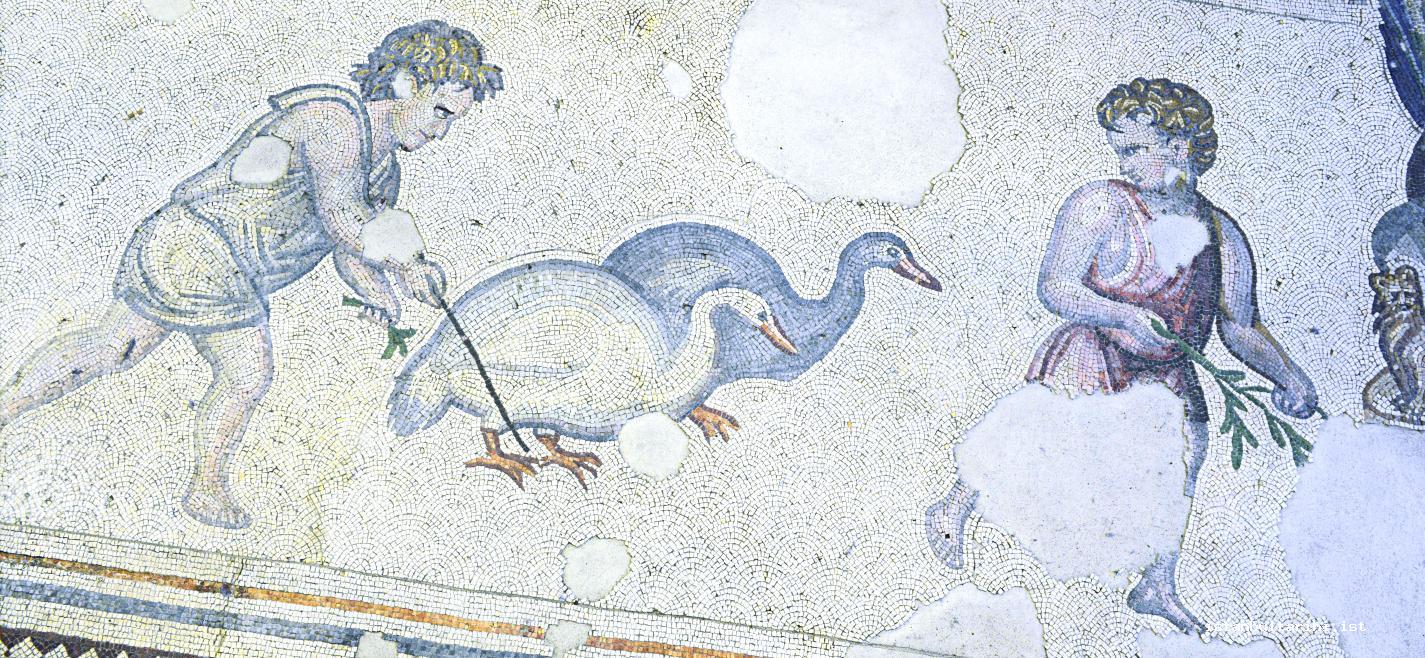
Despite this apparent wealth, consecutive political, financial and military problems shook Byzantine Empire to its foundations in the eleventh century. Many military or civilian bureaucracy rooted people aspired to be the emperor with the collapse of Macedonian Dynasty and the successful ones among these candidates would distribute sources to their supporters by using the financial sources of the state. Resources spent carelessly could only be renewed by reducing the gold value in coins, in other words, by devaluation.68 In terms of military, Byzantine had to deal with tough enemies and guests such as Seljuk Turks in the east, Normans in the west and Crusaders who wanted to go through Byzantine land in order to advance to Palestine. The members of Komnenos Dynasty founded by Alexios Komnenos who came from a military background and a wealthy family of Kastamonu area not only protected the empire from these dangers from the late-eleventh century to the late-twelfth century but also injected fresh blood into the empire as a result of a series of reforms. eleventh and twelfth centuries should be defined as the financial welfare period for Byzantine state which possessed the crowded coastal regions of Anatolia and all of Balkans suitable for agriculture and husbandry, and its magnificent capital Constantinople.69 Although we do not have legal documents, historical and literary sources such as Eparkhos’s Book sheds light on the economical history of the capital in this period.70 Not only Greek but also all langugages of the world could be heard in Constantinople where the population almost reached 400.000 in the Late Ancient Era. The best proof for this comes from Ioannes Tzetzes, a poet who lived in Constantinople in the twelfth century. The poet writes the following while wandering in the streets of the city: “One finds me a Scythian (Patzinak) among Scythians, Latin (Italian) among Latins and among any other tribe, a member of that folk. When I embrace a Scythian, I accost him in such a way: ‘Salamek altı, salamek altubeg.’ To a Latin I speak in the Latin language ‘Bene venesti, domine, bene venesti frater (Welcome, my lord, welcome, my brother)’. So I talk with all of them in a proper and befitting way.”71
Athens metropolitan bishop Mikhael Khoniates presented a clear evidence to show how the production in the states of the empire was reflected on the capital while addressing the public: “Aren’t the fertile plains of Thrace, Macedonia and Thessalia feeding you anymore? Aren’t Eubeios [Eğriboz], Phteleon, Chios [Sakız], Rhodes crushing their grapes for you?” Hundreds of thousands of people in Constantinople who had a higher welfare level than the rest of the empire would snort calling the bread mixed with barley or legume “the nasty bread” while they bought the quality bread called “white bread” made from only wheat sifted well in bakers every day. When fresh fruits and vegetables that were in the gardens of their houses or gardens within the city came short, they would meet their needs in the neighborhood grocery stores that sold dried and smoked fish, cheese, vegetables and fruits. Although meat was relatively expensive, fish was so cheap and easy to find that some types were cheaper than bread. Mackerels that migrated between Black Sea and Marmara, stationary fish such as palymides (bonito), gurnard and red mullet would always find a place for themselves on the tables of the poor. Also, there were fishers who set up their shops on the dock and sold fried fish.72 We can find what an average Constantinople person ate in Komnenos period in a poem where the poet complained about poverty. The poet claims that the cellar of a gold thread worker was full of bread, wine and dried mackerels and shoemaker had tripe in the morning and Wallach73 cheese that came from Thrace region.74
As a result of the rise in both Byzantine economy and Meditarrenean and European trade in the twelfth century, Byzantine trade products became more variable and textiles, glass, ceramic utensils could find many buyers for themselves both in domestic and foreign markets. Byzantine money improved by Alexios Komennos still had the power.75 This period was also when Italian citystates entered the Byzantine domestic and foreign sea trade network. In the late tenth century and eleventh century, Amalfi in Southwestern Italy had the say in the sea trade Byzantine had with Europe and would carry the products consumed heartily by particularly Europeans. For instance, bronze church doors produced in Constantinople would be sold to Italy via Amalfi and one of these doors is on the wall in the entrance of Amalfi cathedral.76 Venetians, people from Pisa and shortly after Genovese seized this profitable trade in a short time. As the Italian cities mentioned, Venice was under the hegemony of Byzantine at the beginning of Mediavel Era but it later acquired its independence. Venice did not completely break off the military and financial relations with Byzantine State and started having a say in Byzantine trade through the privileges it acquired.77 The first privilege Venice Republic took from Byzantine was the reduction of the tax taken from Venetian ships that entered the Dardanelles from 30 nomismata to 17 nomismata in 922 in exchange for support for Byzantine armies in their voyages to Southern Italy.78 Nearly one century later, the privileges given by Emperor Alexios Komnenos to Venetians in exchange for fleet support against Norman danger brought Venetians to an equal position with local merchants of Byzantine particularly in terms of taxes. Venetians, who were exempted from the 10 percent customs tariff foreigners had to pay, started settling in other states of the empire. Alexios, who could not take back the privileges he gave, could only balance the Venetian influence by giving similar privileges to Pisa and Genovese city states.
The increasing influence of European merchants had both positive and negative impacts on Byzantine economy. On one hand, Italian merchants who filled the European markets, which had an increasing ability to buy and unstoppable consumption desire, with Byzantine goods revived Byzantine’s, particularly Constantinople’s industry and enhanced the trade volume. On the other hand, this positive impact, prevalent in the eleventh century and the first half of the twelfth century, turned to negative when Italians started being dominant in domestic and foreign trade of Byzantine. Venetians and Genovese people who expanded their commercial networks they established in Italy, Levant and Egypt towards Byzantine attempted to take hold of some local retail sectors such as cheese trade. The reaction of Constantinople’s administration and society against Italian domination was harsh and officials arrested all Venetians in the city and seized their products on March 12, 1171 and the public targeted at all Italians in the city, seized their goods and exiled them from the city in 1182.79
Despite all this tension, the fact that the Queen of Cities continued to be the queen of trade is undeniable. As we have seen in the example of banker and merchant Kalomodios who lived in the city at the end of the twelfth century, some merchants were so wealthy that emperors could not help attempting to seize their products although they could not succeed.80 The commercial center of the city moved from Marmara Sea shoreline to north in these centuries. The fact that Italians who increased in numbers every passing day established their neighborhood surrounded by walls in the area alongside of the Golden Horn had an impact on this change. Genovese, Pisa, Amalfi and Venetian neighborhoods respectively along the shoreline from Sirkeci to Unkapani turned the Golden Horn into an international port with their own piers.81 Galata on the opposite shore of Constantinople turned into an important Jewish neighborhood with its population reaching 2500 in the eleventh century and a significant number of these Jews became rich through silk trade.82 In mid-twelfth century, Jewish merchant Benjamin of Tudela who travelled for pilgrimage to holy land from Spain wrote: “Jews are in a very bad situation and there is so much hatred towards them and Jew tanners who polluted the Jewish neighborhood by emptying their dirty waters in front of their houses have a share in this hatred.”83 The name of Karaköy is claimed to originate from a Jewish sect called Karaim or Karayit that had members in Constantinople.84 Benjamin’s statements about the capital of Byzantine are a typical representation of how the neighbors of Byzantine saw Constantinople in Medieval Era:
All kinds of merchants from Babylon [Iraq], Shinar [Southern Iraq], Iran, Media [Southern Iraq], Egypt, Palestine, Russian Empire, Hungary, Patzinak country, Caspian State, and Lombardy and Sephardic countries (Spain) came here (Constantinople). It is a busy city and merchants from all countries arrive here through sea and land. There is no other city like this apart from the big city of Islam world, Baghdad.85
Start of the Collapse (Thirteenth-Fifteenth Centuries)
The return of Venetians who were kicked out of the capital in late twelfth century was harsh for Byzantine. The Fourth Crusader armies that advanced towards Egypt headed towards the capital of Byzantine instead of Egypt upon the invitation of Alexios Angelos, the exiled son of dethroned Byzantine Emperor Isaakis Angelos II, and ardent support of Venetians and seized Constantinople in 1204. Venetians came back to the city as part of Crusaders and started controlling the commercial life of newly-established Latin Empire (1204-1261).86 During the last centuries of Byzantine Empire, in other words between 1261 when Byzantine took Constantinople back from Crusaders and 1453, the city was administered by Palaiologos Dynasty.
The founder of Palaiologos Dynasty Mikhael Palaiologos VIII and his successors tried to revive the empire and the capital but they were not very successful.87 The tendencies that affected the fate of the capital financially and started to rise at the end of Komnenos period were completed in Palaiologos period. Italian city-states started to dominate not only the foreign trade but also the domestic trade of the empire through the privileges they received from Byzantine and the power of the trade network they established in Mediterranean basin. Byzantine Empire, which went through a political disintegration in the fourteenth and fifteenth centuries fell to the position of raw material provider for Western European markets. Constantinople became a point where goods both passed in-transit and were redistributed.88 For instance, the raw material of Black Sea would be brought to Contantinople by Italian merchants and be connected to the trade system they established in Meditarrenean.89 During the dominance of Latin Empire and Venetians over Constantinople, the Genovese who supported the Byzantine people who escaped to Anatolia and Balkans left the capital and started settling in Galata. When Byzantine took the city back in 1261, their rights over Galata increased in exchange for their support. Genovese people surrounded Galata with city walls as of 1303 and started to build the Galata Tower in 1349.90 According to what historian Nikephoros Gregoras wrote in the thirteenth century, while young people went to the church, they wore Italian hats.91 The markets of Constantinople were not full of only Italian goods or goods Italians mediated for. The traces of “Eastern fashion” can be seen in the stateman Theodore Metokhites’s mosaic portrait in Chora Church he had restored in early fourteenth century. Metokhites was portrayed to be wearing an Ottoman style-crafted kaftan and a white quilted turban.
Although a big portion of Constantinople’s trade life, particularly foreign trade, was under the control of Italians, it is possible to see local merchants in retail. There were many Byzantines with significant wealth and they gained this wealth from trade. An important part of these merchants were from the aristocrat class who belittled the trade in Early and Medieval Byzantine periods. Changing conditions caused aristocrats to invest their wealth in trade rather than land.92 Moreover, the commercial center of the city did not change in Palaiologos period. Strategion area (Sirkeci) alongside the Golden Horn where crafts and trade were carried out for nearly a millennium, the area of Constantinos and Theodosius squares (Çemberlitaş-Bayezit), and neighborhoods between these areas continued to be the center during the last 200 years of the empire. The only serious change in this late period was that not only Strategion but also the whole Golden Horn area turned into a big trade port with also some leadership by Italian merchants.93 At the end of the fourteenth century, as stressed by Russian pilgrims, Basilica Market was where the ships that went to Galata were located in the area where the Spice Bazaar is located today. As expressed by Ruy González de Clavijo who stayed in Constantinople in 1403 on his way to Timur’s palace as the messenger of Castile king and Pope, Strategion area and its eastern area were the “trade neighborhood of the city.”94 Strategion (Sirkeci-Eminönü) by the Golden Horn, Constantinos and Theodosios squares (Çemberlitaş-Bayezit) were significant commercial spots in Byzantine era. The fact that the Grand Bazaar constructed by Sultan Mehmet the Conqueror and many Ottoman period inns were located at the point where the famous Byzantine road called Makros Embolos (Uzun Çarşı Street) going down to the south from Basilica Market and Mese (Divanyolu/Yeniçeriler The supervision of the state over the economy during the last centuries of Byzantine was almost non-existent. While the Genovese who did not pay taxes to Byzantine for their commercial activities raised the customs tariff to 200.000 golden coins annually by directing the trade to Galata, Constantinople’s share was 30.000 golden coins annually.95 Emperor Ioannis Kantakuzenos VI, who noticed that the income from customs tariff was almost zeroed with the privileges, tried to stop this state of affairs and he reduced the customs tariff to be paid by local merchants to 2 percent in 1348 so that they could compete with Italians and introduced a special customs tariff for products bought and sold by Italians. Italians reacted to these precautions harshly and Kantakuzenos had to step back in the face of threats from military.96 While the supervision of the state over commercial income decreased, its supervision over the organization of production and trade life of the city gradually disappeared.
The second important argument regarding the Byzantine economy in addition to the role of the state was on the general approach of Byzantines towards commercial activities. Byzantine is the heir of Roman Empire in terms of commercial attitude as in many areas. For, Romans and Byzantines who considered making money from money or earning money by buying a manufactured product from somebody and selling it to the other person instead of producing something as an immoral and foul activity, the main and prestigious source of income was either income from working on the land or possession of real estate or the status in the palace. Merchants, bankers and brokers were scorned in written sources and represented as the people subject to tortures in hell in arts.97 The most traditional example of attitude towards trade by dignitaries of Byzantine can be seen in the reaction Emperor Teophilos gave to the trade ship that approached to the port of Boukeleon Palace in the ninth century. Rumour has it that when he learned that the ship was related to his wife Empress Theodora, he had the whole cargo burned.98 Similarly, Emperor Leo IV who lived nearly a century after Teophilos belittled running after profit and said, “Profit is not a goal of our state in overpowering our enemies.”99 As stated before, some wealthy merchants acquired the right to enter the senate in the eleventh century when the domestic and foreign trade of Byzantine was on the rise and Byzantine noblemen entered the commercial life in the last century of the empire but it is still difficult to find positive views about trade in written sources. The reason for this may be that the written sources were conveying the views from the past to future generations with a conservative reflex rather than the fact that the negative views of Byzantines regarding the trade stayed unchanged in a steady way.
In short, while this city located at the point where Balkans met Anatolia served as an average commercial center making use of advantages provided by its strategical location in early period, it turned into one of the biggest metropolitan areas of the world during Byzantine Empire. The city was a significant production center with the factories belonging to the state and ateliers of the private sector and also the most important consumption center of the empire due to the presence of a big population and a wealthy class who could afford to buy luxury items. It is also important to keep in mind that Constantinople served as a transit area for products from outside of the empire. For instance, pepper from Near East was transferred to Bulgarian Kingdom via Constantinople. Financial and commercial changes in Constantinople that served as the capital for East Roman Empire for over 1.100 years are surprising. The capital that returned from the threshold of annihilation in the twelfth century became the most important commercial center of Meditarrenean in the eleventh century. While trade was considered as an occupation a royal man would not be engaged in during Medieval Byzantine period, even aristocrats could not stay away from commercial attempts in following centuries. Byzantine Empire and its queen Constantinople managed to survive for over 1100 years by adapting to the winds of change from inside and outside in a suprising way and rose from its ashes overcoming difficulties such as the twelfth century crisis and 1204 Crusader disaster. As well as the adaptation skills, the belief that the empire was the unchanging reflection of God’s kingdom in heavens on this world also lies under this success. Byzantine written sources constantly repeat the unchanging and almost timeless worldview as a part of this belief. While this indesctructible commitment to the tradition sometimes served as the savior for Byzantine, it also posed an obstacle in renewing itself against foreign powers such as Ottomans and Europeans.
FOOTNOTES
1 For information of Herodotos about the establishment of Byzantion, see Herodotos, Tarih, tr. Müntekim Ökmen, İstanbul: İş Bankası Kültür Yayınları, 2006, p. 353; Semavi Eyice, Tarih Boyunca İstanbul, İstanbul: Etkileşim Yayınları, 2006, pp. 20-21.
2 Herodotos, Tarih, p. 353; Selim Pullu, “Antik Batı Mitolojisinde Istanbul Boğaziçi Efsaneleri”, İmparatorluk Başkentinden Kültür Başkentine İstanbul, ed. Feridun Emecen, Istanbul Kitabevi, 2010, pp. 77-96.
3 Doğan Kuban, İstanbul: Bir Kent Tarihi, Bizantion, Konstantinopolis, İstanbul, Istanbul: Türkiye Ekonomik ve Toplumsal Tarih Vakfı, 2000, pp. 16-19; İnci Delemen, “Bizantion: Koloni-Kent-Başkent”, Byzantion’dan İstanbul’a, Bir Başkentin 8000 Yılı, ed. Koray Durak, Istanbul: Sabancı Üniversitesi Sakıp Sabancı Müzesi, 2010, pp. 54-55; Murat Arslan, İstanbul’un Antikçağ Tarihi: Klasik ve Hellenistik Dönemler, Istanbul: Odin Yayıncılık, 2010.
4 Oğuz Tekin, “Byzantion’un Palamutları ve Altın Boynuz”, TT, 1994, vol. 135, pp. 43-46; Oğuz Tekin, Eskiçağ’da İstanbul’da Balık ve Balıkçılık, Istanbul: Arkeoloji Sanat Yayınları, 2010.
5 Oğuz Tekin, Byzas’tan I. Constantinus’a Kadar Eskiçağ’da İstanbul, İstanbul 1996, pp. 14-15, 22-24. Vincent Gabrielsen, “Trade and Tribute, Byzantion and the Black Sea Straits”, The Black Sea in Antiquity: Regional and Interregional Economic Exchanges, ed. Vincent Gabrielsen and John Lund, Aarhus: Aarhus University Press, 2007, pp. 287-324. For grave Stones, see. Emin Karagözlüoğlu, İstanbul’un Hellenistik ve Roma Devirlerine Ait Mezar Stellerine İlişkin Yeni Buluntular Antik Byzantion Nekropol Buluntularında Yeni Belgeler, Ankara: Güney Basımevi, 1951; Nezih Fıratlı, Les steles funéraires de Byzance Gréco-Romaine, Paris: A. Maisonneuve, 1964.
6 Kuban, İstanbul: Bir Kent Tarihi, pp. 21-23; Wolfgang Müller-Wiener, İstanbul’un Tarihsel Topografyası: 17. Yüzyıl Başlarına Kadar Byzantion-Konstaninopolis-İstanbul, tr. Ülker Sayın, İstanbul: Yapı Kredi Yayınları, 2002, p. 18.
7 G. Dagron, Naissance d’une capitale: Constantinople et ses institutions de 330 à 451, Paris: Presses universitaires de France, 1974, pp. 48-118; Judith Herrin, Bizans, Bir Ortaçağ İmparatorluğunun Şaşırtıcı Yaşamı, tr. Uygur Kocabaşoğlu, Istanbul: İletişim Yayınları, 2010 pp. 33-42; Michael Angold, “The City of Constantine”, Byzantium, New York: 2001, pp. 1-9; Kuban, İstanbul: Bir Kent Tarihi, pp. 27-46; Paul Magdalino, “Bir Dinin ve İmparatorluğun Başkenti Olarak Konstantinopolis”, Byzantion’dan İstanbul’a Bir Başkentin 8000 yılı, ed. Koray Durak, İstanbul: Sabancı Üniversitesi Sakıp Sabancı Müzesi, 2010, p. 84.
8 David Jacoby, “La population de Constantinople à l’époque byzantine: un problème de démographie urbaine”, Byzantion, 1961, vol. 31, pp. 81-109.
9 Albrecht Berger, “Regionen und Strassen in frühen Konstantinople”, Istanbuler Mitteilungen, 1997, vol. 47, pp. 350-351; Jacoby, “La population de Constantinople”, pp. 99-102.
10 Arnold H. M. Jones, The Later Roman Empire, 284-602, Oxford: Blackwell, 1964, p. 228. For a general introduction to the city’s subsistence see A. J. Boudewijn Sarks, “The Size of Grain Distribution in Imperial Rome and Constantinople”, Athaneum, 1999, vol. 79, pp. 215-237; Ece Turnator, “Bizans Döneminde Konstantinopolis’in İaşesi”, Toplumsal Tarih Dergisi, 2003, vol. 112, pp. 86-89.
11 Berger, “Regionen und Strassen”, pp. 362, 368.
12 Berger, “Regionen und Strassen”, p. 357; Maria M. Mango, “The Commercial Map of Constantinople”, Dumbarton Oaks Papers, 2000, vol. 54, pp. 192-193. Theodosios Limanı’nda ticaret için, Rahmi Asal, “Theodosius Limanı ve İstanbul’un Bizans Dönemi Deniz Ticareti”, İstanbul Arkeoloji Müzeleri, 1. Marmaray-Metro Kurtarma Kazıları Sempozyumu Bildiriler Kitabı 5-6 Mayıs 2008, İstanbul: İstanbul Arkeoloji Müzesi, 2010, pp. 153-160.
13 Berger, “Regionen und Strassen”, pp. 362, 367; Mango, “The Commercial Map of Constantinople”, p. 193.
14 Mango, “The Commercial Map of Constantinople”, p. 196; Cyril Mango, Le développement urbain de Constantinople, IVe-VIIe siècles, Paris: Diffusion de Boccard, 1985, p. 48.
15 Mango, “The Commercial Map of Constantinople”, p. 191.
16 The most detailed study on the role of the state in economy is still Nicolas Oikonomides, “Role of the Byzantine State in the Economy”, Economic History of Byzantium, ed. Angeliki E. Laiou, Washington: Dumbarton Oaks Research Library and Collection, 2002, vol. 3, pp. 975-1058.
17 Constantine Porphyrogenitus: Three Treatises on Imperial Military Expeditions, ed. John Haldon, Wien: Verlag der Österreichischen Akademie der Wissenschaften, 1997, p. 113.
18 Anna Avramea, “Land and Sea Communications, Fourth-fifteenth Centuries”, Economic History of Byzantium, ed. Angeliki E. Laiou, Washington: Dumbarton Oaks Research Library and Collection, 2002, vol. 1, p. 74. For Byzantine maritime and land routes in Late Antiquity see Jones, The Later Roman Empire, pp. 825-834.
19 For a general introduction, see Eurydice Georganteli, “Numismatics”, The Oxford Handbook of Byzantine Studies, ed. Elizabeth Jeffreys, John Haldon and Robin Cormack, Oxford:Oxford University Press, 2008, pp. 161-166; Oğuz Tekin, Bizans Sikkeleri: Yapı Kredi Koleksiyonu, İstanbul: Yapı Kredi Kültür Sanat Yayıncılık, 1999.
20 Maria M. Mango, “Commerce”, The Oxford History of Byzantium, ed. C. Mango, Oxford: Oxford University Press, 2002, p. 163. For a general introduction see Chris Entwistle, “Late Roman and Byzantine Weigths and Weighing Equipment”, The Oxford Handbook of Byzantine Studies, pp. 38-45.
21 Cécile Morrisson ve Jean-Pierre Sodini, “The Sixth-Century Economy”, Economic History of Byzantium, vol. 1, p. 210; Marcus Rautman, Daily Life in the Byzantine Empire, London: Greenwood Press, 2006, p. 75. For the decreasing role of the state in subsistence, see Alan Harvey, “The Economy”, The Oxford Handbook of Byzantine Studies, p. 631.
22 Jones, The Later Roman Empire, pp. 834-840.
23 Oxford Dictionary of Byzantium, ed. Alexander Kazhdan, New York: Oxford University Press, 1991, vol. 2, pp. 774-775.
24 Anthony Cutler, “Gifts and Gift Exchange as Aspects of the Byzantine, Arab and Related Economies”, Dumbarton Oaks Papers, 2001, vol. 55, pp. 247-278.
25 Morrisson ve Sodini, “The Sixth-Century Economy”, p. 210.
26 John Haldon, “Economy and Administration, How did the Empire Work?”, The Cambridge Companion to the Age of Justininan, ed. Michael Maas, Cambridge: Cambridge University Press, 2005, p. 36.
27 Harvey, “The Economy”, p. 632; Rautman, The Byzantine Empire, p. 98; Tamara Talbot Rice, Bizans’ta Günlük Yaşam, İstanbul: Göçebe Yayınları, 1998, pp. 151-152; Morrisson and Sodini, The Sixth-Century Economy, pp. 210-211.
28 Harvey, “The Economy”, pp. 632-633.
29 Nicolas Oikonomides, “Silk Trade and Production in Byzantium from the Sixth to the Ninth Century: The Seals of Kommerkiarioi”, Dumbarton Oaks Papers, 1986, vol. 40, pp. 33-53; John Haldon, Byzantium in the Seventh Century: The Transformation of a Culture, Cambridge: Cambridge University Press, 1997, pp. 233-244.
30 C. Mango, Le dévelopment urbain, pp. 51-62; Mango, “The Commercial Map of Constantinople”, p. 198; Paul Magdalino, “Medieval Constantinople”, Studies on the History and Topography of Byzantine Constantinople, Aldershot: Ashgate, 2007, pp. 17-20; Angeliki E. Laiou and Cécile Morrisson, The Byzantine Economy, Cambridge: Cambridge University Press, 2007, p. 41; John L. Teall, “Byzantine Agricultural Tradition”, Dumbarton Oaks Papers, 1971, vol. 25, pp. 35-59.
31 Rautman, Daily Life, p. 100; John Haldon, The Palgrave Atlas of Byzantine History, New York 2005, p. 88.
32 Angeliki E. Laiou, “The Byzantine Economy: An Overview”, Economic History of Byzantium, vol. 3, p. 1146.
33 Anne Bartoli ve Michel Kazanski, “Kherson and its Region”, Economic History of Byzantium, vol. 2, pp. 660, 662; Laiou and Morrisson, The Byzantine Economy, p. 41.
34 Herrin, Bizans, p. 211.
35 The Rhodian Sea Law, ed. Walter Ashburner, Aalen: Scientia, 1976, pp. 83, 91-92.
36 Laiou and Morrisson, The Byzantine Economy, pp. 45-47, 55, 81-84. For a Turkish source about the period of Macedonian dynasty, see M. Murat Baskıcı, Bizans Döneminde Anadolu: İktisadi ve Sosyal Yapı (900-1261), Ankara: Phoenix Yayınevi, 2009.
37 Magdalino, “Medieval Constantinople”, pp. 11-13; Mango, “The Commercial Map of Constantinople”, pp. 197-198.
38 Fort he story of the institution of Eparkhos in Late Ancient Era, see Dagron, Naissance d’une capitale, pp. 213-296.
39 Magdalino, “Medieval Constantinople”, pp. 22-27; Mango, “The Commercial Map of Constantinople”, pp. 198-201.
40 Nicolas Oikonomides, “Quelques boutiques à Constantinople au Xe s.: Prix, loyers, imposition (Cod. Patmiacus 171)”, Dumbarton Oaks Papers, 1972, vol. 26, pp. 345-356.
41 Mango, “The Commercial Map of Constantinople”, pp. 201-203; Laiou and Morrisson, The Byzantine Economy, pp. 77-78.
42 Jonathan Shepard, “Constantinople-Gateway to the North: the Russians”, Constantinople and its Hinterland, ed. Cyril Mango and Gilbert Dagron, Aldershot: Variorum, 1995, pp. 251-253.
43 Mango, “Commerce”, p. 163.
44 Angeliki E. Laiou, “Exchange and Trade, Seventh-Twelfth Centuries”, Economic History of Byzantium, vol. 2, pp. 704, 733.
45 Das Eparchenbuch Leons des Weisen, tr. Johannes Koder, Wien: Verlag der Österreichischen Akademie der Wissenschaften, 1991, p. 108.
46 Ibn Juljul, Ergänzung zur Materia Medica des Dioskurides, Arabischer Text nebst kommentierter deutscher Übersetzung, ed. Albert Dietrich, Göttingen: Vandenhoeck & Ruprecht, 1993, p. 57.
47 Vladimir Minorsky, “Marvazi on the Byzantines”, Medieval Iran and its Neighbours, London: Variorum Reprints, 1982, pp. 456-459.
48 Stephen Reinert, “The Muslim Presence in Constantinople, 9th-15th Centuries: Some Preliminary Observations”, Studies on the Internal Diaspora of the Byzantine Empire, ed. Helen Ahrweiler and Angeliki E. Laiou, Washington: Dumbarton Oakes Research Library and Collection, 1998, pp. 125-150.
49 S. Dov Goitein, Mediterranean Society: The Jewish Communities of the Arab World as Portrayed in the Documents of the Cairo Geniza, Berkeley: University of California Press, 1967-93, vol. 1, p. 46; vol. 4, pp. 106, 114.
50 Constantini Porphyrogeniti imperatoris de ceremoniis aulae Byzantinae libri duo, ed. J. Jacob Reiske, Bonn: Ed. Weberi, 1829, pp. 607, 677-678.
51 Laiou, “Exchange and Trade”, pp. 725, 727, 746.
52 For industry production in the city, particularly silk production, see. David Jacoby, “Silk in Western Byzantium before the Fourth Crusade”, BZ, vol. 84-85 (1991-92), pp. 452-500; Abdülhalik Bakır and Pınar Ülgen, “Geç Ortaçağlarda İstanbul’un Endüstriyel Kapasitesine Dair Bir Değerlendirme”, İmparatorluk Başkentinden Kültür Başkentine İstanbul, ed. Feridun Emecen, Istanbul Kitabevi, 2010, pp. 133-148.
53 Nicolas Oikonomides, “Entrepreneurs”, The Byzantines, ed. Guglielmo Cavallo, Chicago: University of Chicago Press, 1997, pp. 162-163; David Jacoby, “850 Dolaylarından 1453’e Konstantinopolis’in Ekonomisi”, Byzantion’dan İstanbul’a, p. 95.
54 Robert Lopez, “Dollar of the Middle Ages”, The Journal of Economic History, vol. 11, nr. 3 (1951), pp. 209-234; Haldon, The Palgrave Atlas, pp. 44-45.
55 Michel Kaplan, Bizans’ın Altınları, tr. İhsan Batur, Istanbul: Yapı Kredi Yayınları, 2006, p. 74; Rautman, Daily Life, p. 34. For more informatio about the prices, see George Ostrogorsky, “Löhne und Preise in Byzanz”, BZ, 1932, v. 32, pp. 312-333.
56 Nicolas Oikonomides, “Uçsuz Bucaksız Bir Atölye: Zanaatkârlar ve Tüccarlar”, Konstantinopolis, 1054-1261, Hıristiyanlığın Başı, Latinlerin Avı, Yunan Başkenti, ed. Alain Ducellier and Michel Balard, Istanbul: İletişim Yayınları, 2001, p. 106.
57 Laiou and Morrisson, The Byzantine Economy, pp. 49-61.
58 Michel Kaplan, “İmparatorluğun Midesi”, Konstantinopolis: 1054-1261, p. 99; Laiou, “Exchange and Trade”, p. 701.
59 Das Eparchenbuch Leons des Weisen, p. 129.
60 Alexander Kazhdan, “Just Price”, Oxford Dictionary of Byzantium, vol. 2, p. 1085; Laiou and Morrisson, The Byzantine Economy, pp. 56-57.
61 Işın Demirkent, Bizans Tarihi Yazıları: Makaleler-Bildiler-İncelemeler, Istanbul: Dünya Kitapları, 2005, pp. 159-163.
62 Rice, Bizans’ta Günlük Yaşam, pp. 148-150; Kaplan, Bizans’ın Altınları, pp. 73-75; Oikonomides, “Uçsuz Bucaksız Bir Atölye”, pp. 112-114; Jacoby, “850 Dolaylarından 1453’e”, pp. 93-94.
63 Laiou, “Exchange and Trade”, p. 718.
64 Helen Ahrweiler, “Fonctionnaires et bureaux maritimes à Byzance”, Revue des études byzantines, vol. 19 (1960), pp. 239-246.
65 Shepard, “Constantinople-Gateway to the North”, pp. 251-253.
66 Robert Lopez, “Silk Industry in the Byzantine Empire”, Speculum, vol. 20 (1945), p. 34.
67 Kaplan, Bizans’ın Altınları, p. 73.
68 M. C. Morrisson, “La dévaluation de la monnaie byzantine au Xle siècle: Essai d'interpretation”, Travaux et mémories, vol. 6 (1976), pp. 3-48, particularly p. 20.
69 Harvey, “The Economy”, s. 636. For details see Alan Harvey, Economic Expansion in the Byzatine Empire, 900-1200, Cambridge: Cambridge University Press, 1989.
70 Magdalino, “Medieval Constantinople”, pp. 58-61.
71 Alexander Kazhdan and Ann W. Epstein, Change in Byzantine Culture in the Eleventh and Twelfth Centuries, Berkeley University of California Press, 1985, pp. 259-260.
72 Kaplan, “İmparatorluğun Midesi”, pp. 87-89, 103; Rice, Bizans’ta Günlük Yaşam, p. 149; Rautman, The Byzantine Empire, pp. 94-95.
73 A society who were nomads in Southern Balkans and whose roots were based on Balkan locals who were Romans or were made Romans before Slavian raids.
74 Cyril Mango, Bizans, Yeni Roma İmparatorluğu, tr. Gül Çağalı Güven, Istanbul: Yapı Kredi Yayınları, 2008, p. 93. For more information about Byzantine food culture, see Andrew Dalby, Bizans’ın Damak Tadı: Kokular, Şaraplar, Yemekler, tr. Ali Özdamar, İstanbul: Kitap Yayınevi, 2004.
75 Laiou, “The Byzantine Economy: An Overview”, pp. 1151-1152.
76 Margaret E. Frazer, “Church Doors and the Gates of Paradise: Byzantine Bronze Doors in Italy”, Dumbarton Oaks Papers, vol. 27 (1973), pp. 145–162.
77 For the history of Byzantine-Venice relations, see Donald M. Nicol, Bizans ve Venedik: Diplomatik ve Kültürel İlişkiler Üzerine Bir Araştırma, tr. Gül Güven (Çağalı), İstanbul: Sabancı Üniversitesi, 2000.
78 Herrin, Bizans, p. 221.
79 Oikonomides, “Uçsuz Bucaksız Bir Atölye”, pp. 121, 126-127; Oikonomides, “Entrepreneurs”, pp. 164-165.
80 Nicetae Choniatae Historia, ed. Jan Louis van Dieten, Berlin: de Gruyter, 1976, pp. 522-523.
81 For detailed information about these cities, see Michel Balard, “Ele Geçirilecek Bir Pazar: Batı İstilası”, Konstantinopolis, 1054-1261, pp. 191-192. For Venetian neighborhood, see Aygül Ağır, İstanbul’un Eski Venedik Yerleşimi ve Dönüşümü, Istanbul: İstanbul Araştırmaları Enstitüsü, 2009.
82 David Jacoby, “Les Quartiers juifs de Constantinople à l’époque byzantin”, Byzantion, vol. 37 (1967), pp. 175-189; Jonathan Harris, Constantinople, Capital of Byzantium, London: Hambledon Continuum, 2007, pp. 133-135.
83 The Itinerary of Benjamin of Tudela, tr. M. N. Adler, Malibu: J. Simon, 1983, p. 72.
84 P. G. İnciciyan, XVIII. Asırda İstanbul, tr. Hrand D. Andreasyan, İstanbul: İstanbul Fetih Cemiyeti İstanbul Enstitüsü 1976, pp. 23, 50.
85 The Itinerary of Benjamin of Tudela, p. 70.
86 David Jacoby, “The Economy of Latin Constantinople, 1204-1261”, Urbs capta: La quatrième croisade et ses conséquences, ed. Angeliki Laiou, Paris: Lethielleux , 2005, pp. 195-214.
87 For Palaiologos period, see Donald M. Nicol, Bizans’ın Son Yüzyılları (1261- 1453), tr. B. Umar, Istanbul: Türkiye Ekonomik ve Toplumsal Tarih Vakfı , 1999.
88 Jacoby, “850 Dolaylarından 1453’e”, pp. 99-100.
89 Angeliki E. Laiou-Thomadakis, “The Byzantine Economy in the Mediterranean Trade System: Thirteenth and Fifteenth Centuries”, Dumbarton Oaks Papers, vol. 34-35 (1980-81), pp. 179, 184; Oikonomides, “Uçsuz Bucaksız Bir Atölye”, p. 129.
90 Kuban, İstanbul: Bir Kent Tarihi, pp. 172-173; Semavi Eyice, Galata ve Kulesi, Istanbul: Türkiye Turing ve Otomobil Kurumu, 1969.
91 Laiou-Thomadakis, “The Byzantine Economy in the Mediterranean Trade System”, p. 186.
92 Laiou and Morrisson, The Byzantine Economy, pp. 212-213; Angeliki E. Laiou, “The Byzantine Aristocracy in the Palaeologan Period: A Story of Arrested Development”, Viator, vol. 4 (1973), pp. 131-151; Nevra Necipoğlu, Byzantium between the Ottomans and the Latins: Politics and Society in the Late Empire, Cambridge: Cambridge University Press, 2009, pp. 193-195, 231; Oikonomides, “Entrepreneurs”, p. 169.
93 Mango, “The Commercial Map of Constantinople”, p. 205.
94 George Majeska, Russian Travelers to Constantinople in the Fourteenth and Fifteenth Centuries, Washington : Dumbarton Oaks Research Library and Collection, 1984, pp. 140, 353-354; For Clavijo also see. p. 354.
95 Harris, Constantinople, p. 177.
96 Oikonomides, “Entrepreneurs”, p. 167.
97 Mango, “Commerce”, p. 163.
98 Theophanes Continuatus: Ioannes Cameniata, Symeon Magister, Georgius Monachus, ed. Immmanuel Bekker, Bonnae: E. Weber, 1838, pp. 88-89.
99 Alexander Kazhdan, “Profit”, Oxford Dictionary of Byzantium, vol. 3, p. 1727.
